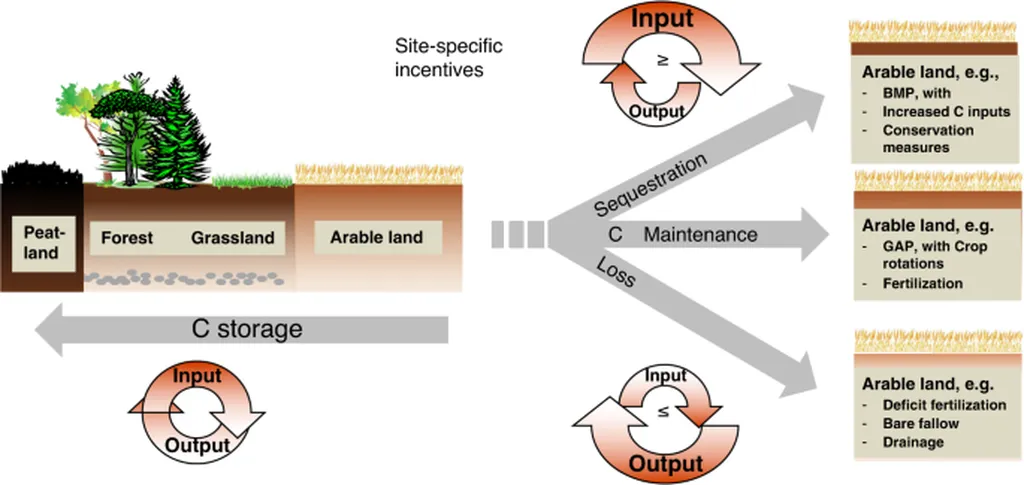In the quest to better understand and predict soil organic carbon (SOC) dynamics, a team of researchers led by Lorenza Pacini from the Laboratoire de Géologie at École Normale Supérieure in Paris has made a significant stride. Their work, published in the journal *Geoderma* (which translates to “Soil Science”), explores the potential of mid-infrared spectroscopy (MIR) as a cost-effective and high-throughput technique to assess the stability of SOC. This research holds promising implications for the energy sector, particularly in improving projections of SOC stock evolutions, which are crucial for carbon sequestration strategies.
Pacini and her team set out to determine whether MIR spectroscopy could accurately predict the proportion of centennially stable SOC—carbon that remains in the soil for over a century. They compiled a spectral library of over 1,800 records from the French Réseau de Mesure de la Qualité des Sols (Network for Measuring Soil Quality) to calibrate a model using MIR data. The results were encouraging. “The model gave accurate predictions,” Pacini explained, “with an RMSE of 0.06, RPD of 2.21, and RPIQ of 3.26. This suggests that MIR spectra contain relevant information on SOC biogeochemical stability.”
The implications for the energy sector are substantial. Accurate predictions of SOC stability can enhance our ability to project SOC stock evolutions, which is vital for developing effective carbon sequestration strategies. “This method holds promise for improving projections of SOC stock evolutions,” Pacini noted, highlighting the potential for more precise and reliable data.
However, the research also uncovered challenges. When the team attempted to transfer the model to datasets acquired using different MIR spectrometers on German and Finnish soil samples, the accuracy of the predictions degraded. Even using the CORAL data alignment method to harmonize the different spectral datasets did not fully resolve the issue. “We found that the transfer of such models to different soils, scanned with different instruments or different protocols, is difficult,” Pacini acknowledged.
This finding underscores the need for careful calibration transfer and possibly local calibration within a similar spectral space for large-scale deployment. Despite these challenges, the research demonstrates the potential of MIR spectroscopy as a valuable tool for assessing SOC stability. As Pacini put it, “It is possible to predict the proportion of centennially stable carbon determined by the PARTYsoc model using MIR spectroscopy.”
The study’s findings could shape future developments in the field by encouraging further research into calibration transfer methods and the standardization of MIR spectroscopy protocols. This could lead to more widespread and reliable use of MIR spectroscopy for assessing SOC stability, ultimately benefiting the energy sector and other industries reliant on accurate carbon sequestration data.
In summary, Pacini’s research offers a compelling glimpse into the potential of MIR spectroscopy for assessing SOC stability. While challenges remain, the study paves the way for future advancements in this critical area of research. As the world continues to grapple with the impacts of climate change, accurate predictions of SOC stock evolutions will be increasingly important, making this research a significant contribution to the field.

